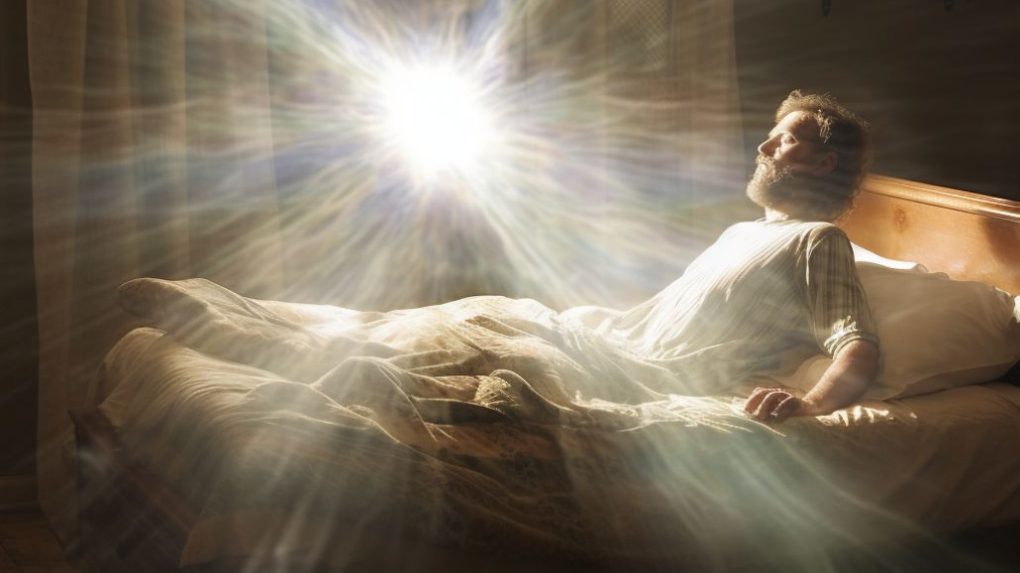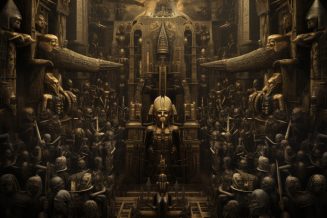Exploring the Reality of Life After Death

Often described as profound, transformative events, NDEs have sparked interest and debate among scientists, theologians, and the general public alike.
This in-depth article post seeks to illuminate the captivating world of NDEs, exploring their common characteristics, scientific theories, cultural variations, and their profound impact on individuals’ lives in relation to life after death.
Key Takeaways
- Exploring the complexity of near-death experiences (NDEs) and their lasting transformative effects.
- Investigating neurological correlates in the brain, potential physiological and cultural factors influencing NDEs, life reviews offering insight into forgotten events, out-of body experiences suggesting a connection to consciousness.
- Examining spiritual transformations resulting from NDEs such as increased spirituality & appreciation for life impacting both individuals & family members.
Categories in This Section
Understanding Near-Death Experiences

Near-death experiences represent intense psychological events, commonly occurring during perilous scenarios that pose a threat to life. A prevalent feature of these experiences is a sense of separation from the physical body, wherein individuals perceive their surroundings from a different perspective. This intriguing occurrence invites reflection on the concept of consciousness and its interplay with the physical body.
Perceptions of near-death experiences (NDEs) often include:
- Seeing and hearing outside of the physical body
- Passing through a tunnel
- Meeting a mystical light
- Having intense, generally positive emotions
- Revisiting parts or all of their past life
- Encountering deceased loved ones
These shared characteristics have puzzled and fascinated researchers, leading to extensive studies dedicated to exploring the phenomenon and its source, including potential connections to nervous and mental disease.
Life-changing effects
Near-death experiences frequently leave a lasting imprint on those who have undergone them. This is particularly true for cardiac arrest patients who consistently report clear memories and changed perceptions of life and death. The subsequent effects of NDEs, to be discussed in depth later, typically involve pronounced changes in personal attitudes, beliefs, and values. Such transformative changes underline the significant impact of NDEs and their ability to redefine our perspective on life and death.
The Encounter with Eternity: Cardiac Arrest and NDEs
Numerous studies have documented near-death experiences associated with cardiac arrest. During these critical moments, some researchers suggest that visual hallucinations may be a result of altered brain activity. For instance, a patient undergoing surgery for a heart valve replacement reported:
- feeling themselves leave their body and rise above the operating table
- seeing the medical team trying to restart their heart
- seeing their deceased father at the head of the table
These experiences led them to contemplate the concept of eternal life. Such accounts hint at the potential for NDEs to offer insights into the nature of consciousness and its relationship with the physical body.
Interestingly, only a small fraction of individuals recounting near-death experiences mention encounters with living beings during their experiences. Indeed, merely 4% of such experiencers report such incidents, which predominantly occur amidst life-threatening events. Given the commonality of encounters with deceased relatives and friends in popular narratives of near-death experiences, this figure is surprisingly low. This indicates a substantial variability in the content of NDEs, reflecting individual differences in perception and interpretation.
Despite the rarity of encounters with living beings during NDEs, out-of-body experiences are relatively common. In a study of 613 near-death experiences, 23 occurred while under general anesthesia, where the patient reported sensations of leaving their body and observing their surroundings from an outside perspective. These findings highlight the complexity of NDEs and the diverse range of experiences reported by individuals who have come close to death.
Beyond the Physical Body: Out-of-Body Experiences

Out-of-body experiences (OBEs) frequently occur during near-death experiences. In such instances, individuals often describe a feeling of detachment from their physical bodies while observing themselves and their surroundings from a distinct perspective. About 45% of those recounting near-death experiences report such out-of-body experiences. These occurrences invite intriguing inquiries about the nature of consciousness and its connection to the physical body.
Research has demonstrated that individuals who experience a near-death situation can accurately recall details of their resuscitation events. This remarkable accuracy is another curious element of the NDE phenomenon. In one study, Dr. Penny Sartori discovered that individuals who had a near-death experience were often remarkably precise in their description of the details involved in their resuscitation. This accuracy was quite surprising, given the circumstances. Similarly, Dr. Janice Holden’s study revealed that 92% of the case reports reviewed were found to be entirely accurate when the OBE observations were subsequently investigated.
Dr. Michael Sabom’s research focused on the precision of out-of-body observations during near-death experiences. His findings suggest that OBEs during NDEs are not mere figments of imagination or hallucinations, but substantial experiences that can offer valuable insights into the nature of consciousness and its connection to the physical body.
The Life Review: A Reflection of One’s Whole Life
A life review refers to a phenomenon where individuals experience a recollection of their entire lives during a near-death experience. Often, this experience is narrated from a third-person perspective, providing the individual with a unique chance to introspect on their actions, choices, and relationships throughout their life.
Life reviews, which bring to light forgotten events and enable the perception of others’ feelings from past interactions, lend credibility to Near-death Experiences (NDEs). The detailed and accurate recollections, which challenge conventional understanding of memory and consciousness, add a layer of complexity to the study of near-death experiences.
The psychological rationale for the life review phenomenon in near-death experiences suggests it might be due to the brain’s effort to effectively process and understand significant memories and experiences. During a near-death experience, the brain might enter an elevated state of consciousness, potentially facilitating a more vivid and detailed recollection of past events.
This life review process can provide individuals with an opportunity for contemplation, understanding, and assimilation of their life experiences.
The Science Behind the Spiritual: Investigating Brain Function During NDEs

The convergence of science and spirituality in the study of near-death experiences presents a captivating field of investigation. While the spiritual aspects of NDEs, such as encounters with deceased loved ones and feelings of serenity and love, are well-documented, the scientific aspects of these experiences remain less comprehended. This section will explore the scientific research surrounding NDEs, focusing on the neural correlates of consciousness in the brain and the similarities between NDEs and complex partial seizures.
Scientific theories propose that near-death experiences result from physiological changes in the brain, such as reduced blood flow and lack of oxygen. These changes can lead to altered states of consciousness and vivid hallucinations, hinting at a potential neurological basis for NDEs. However, these theories invite controversy, as critics argue that the clear state of consciousness reported during NDEs implies that the brain is not the sole contributor.
Cultural expectations and beliefs add another dimension to the study of NDEs, as they can influence an individual’s interpretation of these experiences. Although such cultural factors can add to the variability of NDEs, they do not fully account for the common elements that surpass cultural influences, such as feelings of peace, a sense of detachment from the physical body, and encounters with deceased loved ones. These shared elements suggest that NDEs might be influenced by inherent human traits or universal aspects of consciousness, rather than being exclusively shaped by cultural or neurological factors.
The Dying Brain Hypothesis: Neurological Perspectives
The dying brain hypothesis suggests that near-death experiences are a result of physiological changes in the brain, such as decreased blood flow and oxygen deprivation. These changes can lead to altered states of consciousness and vivid hallucinations, indicating a potential neurological basis for NDEs. However, the exact mechanisms and functions of neurotransmitters in these events remain to be fully clarified.
Damage to certain brain regions, including the bilateral occipital cortex and unilateral or bilateral temporal lobe structures, may explain the common features of near-death experiences. For instance, impairment of the occipital cortex may cause visual phenomena such as a tunnel or bright light, while damage to the temporal lobe structures may give rise to emotional experiences, memory flashbacks, or a life review.
Despite its appeal, the dying brain hypothesis has encountered several critiques. Some argue that the lucidity of consciousness reported during near-death experiences implies that the brain is not the sole contributor. Furthermore, alternative theories and hypotheses that examine the connection between consciousness and near-death experiences pose challenges to the dying brain hypothesis.
Studies in Contrast: Cultural Expectations and NDE Variability
Cultural expectations and beliefs can greatly influence an individual’s understanding and interpretation of near-death experiences. However, it is suggested that these experiences may be rooted in something more innate than religious or cultural expectations, indicating potential similarities in the experiences irrespective of cultural background.
Narratives of near-death experiences vary across different cultures, yet certain common elements suggest that they originate from phenomena beyond cultural influence. For instance, various cultures, including those in India, China, and South America, have reported near-death experiences. Cultural and religious views impact the interpretation and description of these NDEs.
However, research has not conclusively demonstrated a significant effect of religious background on the nature of NDEs. This observation underscores the complexity of near-death experiences and the potential influence of inherent, universal aspects of human consciousness in shaping these experiences.
A Tapestry of Testimonies: Personal Accounts of NDEs
Personal accounts of near-death experiences offer a rich array of testimonies that highlight the profound impact of these experiences. From encounters with deceased loved ones to life-altering transformations, these narratives provide compelling insights into the diverse range of experiences and perceptions associated with NDEs.
One such account comes from Colton Burpo, who underwent emergency surgery for a ruptured appendix and reported a visit to heaven, encounters with deceased relatives, and a glimpse into his family’s future. Similarly, Humberto Casas, from the Chicago area, experienced a cardiac arrest and described it as a beautiful sensation. These personal testimonials underscore the profound and transformative impact of NDEs on individuals’ lives.
The subsequent effects of NDEs often involve marked changes in individuals’ attitudes, beliefs, and values. These transformations underscore the profound impact of NDEs and their potential to reshape our understanding of life and death. Future sections will delve further into these after-effects, exploring the spiritual transformations and relationship changes that often follow NDEs.
Pioneers of Near-Death Experiences: Raymond Moody and His Findings
One of the key figures in the study of near-death experiences is Dr. Raymond Moody. An esteemed philosopher, psychologist, and physician, Dr. Moody is often referred to as the “father” of the modern NDE (Near-Death Experience) movement. His groundbreaking work in the 1970s brought the concept of the NDE into mainstream consciousness.
In his seminal book, “Life After Life,” published in 1975, Dr. Moody documented detailed accounts of people who had experienced clinical death and then returned to life. Through his research, he identified common elements in these experiences, such as feelings of peace, a sense of detachment from the body, moving through a tunnel, encountering a bright light, and meeting deceased loved ones.
Moody’s work was revolutionary at the time and sparked a new field of research. His findings have been instrumental in shaping our understanding of near-death experiences and their potential implications for our perceptions of life, death, and what might lie beyond.
From Clinical Death to Renewed Life: Survivors’ Stories
The experience of clinical death can substantially impact survivors’ perception of life. Near-death experiences, often characterized by clear memories, conscious perception, and a sensation of being outside the body, can trigger significant transformations in individuals’ lives, resulting in a new outlook on life and an enhanced sense of purpose.
Survivors’ narratives of near-death experiences often include:
- Descriptions of seeing demons
- Experiencing a profound sense of tranquility
- Recalling CPR
- Encountering a variety of emotional, cognitive, religious, spiritual, and supernatural phenomena
These experiences underline the diverse range of experiences linked with NDEs, reflecting individual differences in perception and interpretation.
Survivors of near-death experiences often report personal changes, including:
- A heightened appreciation for life
- An increased sense of purpose
- A decreased fear of death
- A shift in priorities
These changes underscore the transformative potential of NDEs, suggesting that these experiences can have a profound and lasting impact on individuals’ lives.
Meeting the Deceased: Encounters with Deceased Relatives and Friends

Accounts of near-death experiences frequently include descriptions of encounters with deceased relatives. These encounters might involve recognition of relatives from past lives or even those never encountered in the current life, typically evoking a sense of familiarity and connection. These experiences can bring comfort and reassurance to individuals who have undergone NDEs, acting as a link to the past and a bridge to the future.
In a survey of 74 near-death experience cases, 129 reports of encounters with spirits were documented, many of which involved deceased friends or relatives. These encounters often bring a sense of comfort and reassurance to the individuals who have had these experiences. This sense of connection and reassurance can play a significant role in the transformative impact of NDEs, influencing individuals’ attitudes towards life and death.
Research on encounters with deceased loved ones during NDEs suggests that individuals might sense the presence of deceased friends or spiritual entities. These encounters often result in feelings of love, peace, and tranquility, reflecting the profound emotional and spiritual impact of NDEs. Furthermore, cultural and religious beliefs influence the interpretation of encounters with deceased relatives during NDEs across different cultures. This highlights the role of cultural and individual factors in shaping the content and interpretation of near-death experiences.
The Aftereffects: How NDEs Influence Lives Post-Experience

The aftermath of near-death experiences can be profound and life-altering. These experiences frequently lead to significant changes in individuals’ attitudes, beliefs, and values, reflecting the transformative impact of NDEs. Some common changes induced by NDEs include:
- A diminished fear of death
- An enhanced sense of compassion and empathy
- Increased spirituality and a deeper connection to the divine
- A greater appreciation for life and its meaning
These changes can leave a lasting imprint on individuals’ lives.
Near-death experiences can lead to enduring transformations in individuals’ lives. These transformative effects often involve an increased appreciation for life, a heightened sense of purpose, and a diminished fear of death. Furthermore, these experiences can prompt a reassessment of priorities, a deeper comprehension of the interconnectedness of all living beings, and a renewed sense of purpose and meaning in life.
In addition to personal transformations, NDEs can also significantly impact family and friends. The changes experienced by individuals who have undergone an NDE can reverberate to their loved ones, affecting their relationships and family dynamics.
Subsequent sections will delve further into these after-effects, exploring the spiritual transformations and relationship changes that often occur following NDEs.
Spiritual Transformations: Shifts in Worldview
Near-death experiences can result in profound spiritual transformations and shifts in worldview, often leading individuals to recognize their connection to spiritual beings. These transformations often include:
- Increases in spirituality
- Concern for others
- Apprecation of life
- A decrease in the fear of death
- A strengthened belief in the afterlife
These changes often result in a new perspective on life, a reevaluation of priorities, and a greater sense of purpose and meaning.
Research has demonstrated that near-death experiences can be associated with an increased sense of spirituality and a connection with one’s inner self. These spiritual transformations often result in significant and long-lasting alterations in a person’s outlook on life and their role in the world. This underscores the profound and transformative impact of NDEs, suggesting that these experiences can lead to a deeper understanding of life and a greater sense of purpose and meaning.
Changed Relationships: Effects on Family Members and Friends
The transformative effects of near-death experiences can extend beyond the individuals who experience them, affecting their relationships with family members and friends. These changes often involve:
- A heightened emphasis on interpersonal relationships
- A modification in priorities
- Potential ramifications for family and friends who may be affected by the experience.
Near-death experiences can have a considerable effect on a person’s relationship with their spouse or partner. Some common changes that may be observed include:
- Alterations in interests, hobbies, and personality
- Changes in mood
- Distance or withdrawal
- Total transformation in character
These modifications can have implications for the relationship’s dynamics and connection.
Children may respond to a parent’s near-death experience in a variety of ways, contingent upon their age, temperament, and prior experiences. Common reactions may include:
- Fear and anxiety
- Emotional turmoil
- Behavioral changes
- Increased empathy
- A need for reassurance
These reactions underscore the profound impact of NDEs on family dynamics and the potential for these experiences to reshape relationships and family structures.
The Concept of the Soul in Near-Death Experiences
The concept of the soul, an integral aspect of many philosophical, religious, and spiritual beliefs, often emerges in discussions of near-death experiences. The soul is commonly understood as the immaterial essence or spirit that gives life to a physical body, often viewed as immortal and surviving physical death.
In the context of near-death experiences, many individuals report experiences that suggest the existence and survival of the soul. For instance, the frequently reported phenomenon of feeling detached from the physical body and observing events from an outside perspective could be interpreted as the soul leaving the body.
Furthermore, encounters with deceased loved ones and experiences of transcending the physical realm during NDEs often reinforce belief in the soul’s existence and its survival post-death. These experiences suggest a continuation of consciousness, implying that the essence or ‘soul’ of a person persists beyond physical demise.
However, interpretations vary widely, and while some see these experiences as proof of the soul and an afterlife, others interpret them as psychological phenomena or the result of physical changes in a dying brain. Despite these differing interpretations, the experiences reported by those who have had NDEs undeniably raise thought-provoking questions about the nature of the soul and its possible existence beyond physical life.
Bridging Worlds: The Intersection of Science and Spirituality in NDE Studies
The convergence of science and spirituality in the study of near-death experiences presents a captivating field of investigation. Researchers from both scientific and spiritual backgrounds are conducting empirical studies to examine the features and patterns of NDEs, with the goal of understanding the phenomenon from each perspective.
Scientific theories propose that near-death experiences result from physiological changes in the brain, such as reduced blood flow and lack of oxygen. These changes can lead to altered states of consciousness and vivid hallucinations, hinting at a potential neurological basis for NDEs. However, these theories invite controversy, as critics argue that the clear state of consciousness reported during NDEs implies that the brain is not the sole contributor.
Cultural expectations and beliefs add another dimension to the study of NDEs, as they can influence an individual’s interpretation of these experiences. Although such cultural factors can add to the variability of NDEs, they do not fully account for the common elements that surpass cultural influences, such as feelings of peace, a sense of detachment from the physical body, and encounters with deceased loved ones. These shared elements suggest that NDEs might be influenced by inherent human traits or universal aspects of consciousness, rather than being exclusively shaped by cultural or neurological factors.
Cultural Beliefs in Near-Death Experiences: A Look at Jewish, Buddhist, and Ancient Egyptian Perspectives
Cultural beliefs significantly shape our understanding and interpretation of near-death experiences. To illustrate this, let’s examine the perspectives of three distinct cultures: Jewish, Buddhist, and Ancient Egyptian.
Jewish Beliefs on Near-Death Experiences
In Jewish tradition, the concept of the soul and life after death plays a significant role. Jewish near-death experiences are often interpreted in the context of these beliefs. For instance, the feeling of peace and love during an NDE is attributed to the soul’s reunion with the divine. Experiences of life review are seen as the soul’s preparation for the divine judgement. Encounters with deceased loved ones are understood as the soul joining the ancestors in the afterlife.
Buddhist Beliefs on Near-Death Experiences
Buddhist interpretations of NDEs are deeply rooted in the doctrines of karma and rebirth. The life review process is seen as a reflection of one’s karma, which influences their future rebirth. The sense of detachment from the body aligns with the Buddhist belief in Anatta, or non-self. The tunnel and light experiences are often interpreted as the transition from one life to the next.
Ancient Egyptian Beliefs on Near-Death Experiences
The Ancient Egyptians had a rich and complex belief system surrounding death and the afterlife. They viewed death not as an end, but as a transition into another realm. Near-death experiences were seen as glimpses into this otherworldly realm, providing insights into what awaits in the afterlife.
The Egyptians believed in the existence of the soul, or ‘ka,’ which they thought would continue to live in the afterlife. This belief is reflected in their elaborate burial practices, which were designed to ensure the ka’s survival.
During a near-death experience, the Egyptians believed that the ka would leave the body and journey to the realm of the gods. This journey was fraught with dangers, including encounters with monstrous creatures and challenging trials. However, those who successfully navigated this journey would be rewarded with eternal life in the Field of Reeds, a paradise-like realm.
Near-death experiences in ancient Egypt were thus seen as rehearsals for the final journey of the soul. They were interpreted as warnings or messages from the gods, providing the individual with a chance to prepare for their eventual transition into the afterlife.
Seeking Explanatory Models: Scientific and Spiritual Perspectives
Several scientific theories have been proposed to explain Near-Death Experiences (NDEs). These theories include:
- The Neurochemical Theory
- The Psychological Theory
- The Survivalist Theory
- The Cognitive Theory
These theories are formulated through careful examination of facts, experimentation, empirical evidence, and the use of the scientific method.
Scientific research has identified several neurological and physiological phenomena commonly associated with near-death experiences (NDEs), such as:
- Out-of-body experiences (OBEs)
- Tunnel vision
- Enhanced senses
- Feelings of peace and joy
- Life review
- Encounters with deceased loved ones
- Transcendence of space and time
However, the exact mechanisms underlying NDEs remain obscure.
The primary spiritual interpretations of Near-Death Experiences include:
- The idea that death is not daunting and that life extends beyond death
- Near-Death Experiences can lead to a diminished fear of death
- Enhanced spiritual awareness
- Encounters with the afterlife or spiritual realms, reflecting the profound emotional and spiritual impact of NDEs.
The Role of Research: Large Scale Study and Quantitative Analysis
Research in the field of near-death experiences has substantially evolved since the mid-1970s when Dr. Bruce Greyson and other researchers first initiated surveys and studies. Large-scale studies and quantitative analysis have played a pivotal role in NDE research, offering a systematic and rigorous approach to the study of near-death experiences.
Large-scale studies, such as the AWARE (AWAreness during REsuscitation) study and a four-year international study of 2060 cardiac arrest cases across 15 hospitals, have allowed researchers to analyze a substantial number of cases and employ statistical methods to identify patterns and trends. These studies have contributed to the scientific understanding of this phenomenon by aiding in uncovering common features, characteristics, and outcomes of NDEs.
Quantitative analysis is employed in near-death experience research through large-scale retrospective studies and systematic analysis. It involves scrutinizing case reports, case series, and qualitative research studies to identify patterns, themes, and structures in the narratives of near-death experiences. This methodological approach has enabled researchers to gain a more thorough understanding of NDEs and to identify common elements and patterns in these experiences.
Where Do We Go When We Die? Theories and Speculations
One of the most profound questions that humans have grappled with throughout history is, “What happens when we die?” While the answer remains a mystery, various theories and speculations have been proposed, each offering a unique perspective on the journey beyond life.
The Spiritual Perspective: Afterlife and Reincarnation
Many religious and spiritual traditions propose the existence of an afterlife, a realm or state of being that our consciousness transitions into upon physical death. This could be Heaven, Hell, or a spiritual realm where souls reside. Some cultures believe in reincarnation, suggesting that our consciousness or soul is reborn in a new body to continue its journey of growth and learning.
The Scientific Perspective: Consciousness and Energy
From a scientific standpoint, the answer is less clear. Some theories propose that consciousness may continue in some form after death, perhaps as energy. According to the law of conservation of energy, energy cannot be created or destroyed, only transformed. Could our consciousness, then, transform into another form of energy?
The Existential Perspective: The Great Unknown
Finally, there’s the existential perspective, which views death as the ultimate unknown. This perspective suggests that what happens after death is unknowable and that the focus should be on living our current life to the fullest.
While these theories offer fascinating insights, they remain speculations. The question of what happens when we die is a deeply personal one, and the answer may be different for each of us. As we continue to explore the mysteries of life and death, perhaps we will come closer to understanding this ultimate journey.
Summary
In exploring the intriguing world of near-death experiences, we have journeyed through the common characteristics of these profound experiences, delved into the scientific theories and spiritual interpretations that seek to explain them, and examined the transformative after-effects that they often have on individuals’ lives. From out-of-body experiences and meetings with deceased loved ones to shifts in worldview and changes in relationships, NDEs represent a fascinating intersection between life and death, science and spirituality. They challenge our understanding of consciousness and the nature of existence, inviting us to reflect on our own lives and the mysteries that lie beyond.
Frequently Asked Questions
What happens if you die in a dream?
Dying in a dream can often be a distressing experience, but it’s important to remember that dreams are a complex interplay of our subconscious thoughts, emotions, and experiences. If you die in a dream, it doesn’t mean you will die in real life. Many interpretations suggest that dreaming about death can symbolize the end of one phase or aspect of your life and the beginning of another. It can represent transformation, change, or self-discovery. However, the meaning can vary greatly depending on the individual’s personal circumstances, feelings, and beliefs.
What happens after you die?
Once someone has died, their heart and breathing stop, and their brain stops functioning. The body is typically taken to a morgue or mortuary, potentially with an autopsy taking place, before being moved to a funeral home to be viewed by friends and family or prepared for burial or cremation.
How does NDE affect the brain?
NDEs suggest that the brain isn’t dead during a cardiac arrest and can lead to confusion and hallucinations caused by hypoxia. This indicates that the filter in the brain is still operational while on the way to death.
What are some common characteristics of near-death experiences?
Near-death experiences often involve out-of-body experiences, passing through a tunnel, meeting a mystical light, intense and positive emotions, reviewing their life, and encountering deceased loved ones.
What is the correlation between cardiac arrest and near-death experiences?
Studies suggest that near-death experiences are commonly linked with cardiac arrest, indicating a correlation between the two.
What is a life review in near-death experiences?
A life review is a phenomenon in which individuals experience a recollection of their entire lives during a near-death experience (NDE). It typically involves reliving memories in rapid succession and feelings of peace, understanding, and compassion.
Featured articles
The Strange Facts of Death – A Look Into Creepy Truths About Mortality
Uncover the mysteries of mortality. Ready for a chilling journey?

The Journey of the Dead - Can Someone Who Has Died Still See Us?
Unveil the secrets of life beyond death: A journey of connection and discovery awaits.

Visions Of Eternity - Experiences By Those Who Have Descended Into The Realm Of Osiris
Unlock ancient mysteries today. Your voyage into eternity begins here.

Heavens According To The Bible – How Many Are There?
Journey through time and beliefs: Discover heaven's many faces across civilizations and scriptures.

Where Do We Go After We Die? Theories on the Afterlife and Soul
Discover the enigma of existence: Explore diverse theories about life after death, the soul, and its controversial existence.

Journeys Out Of The Body – Investigating Robert Monroe's Revolutionary Experiences
Dive into the life of Robert Monroe, a man whose journey through out-of-body experiences reshaped our understanding of consciousness.







